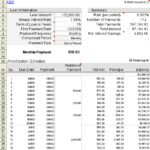
The double-entry accounting system keeps accurate records of all types of business transactions. The company gains $30,000 in assets from the machine but loses $5,000 in assets from cash. Liabilities are also worth $25,000, which, in this case, comes in the form of a bank loan. Accountants will use the general journal as part of their record-keeping system.
Debit on the left, credit on the right
The workload is increased by storing many books of accounts in order to keep accounts in this manner. It is critical to have both theoretical and practical knowledge of accounting principles in order to preserve accounts in this manner. In summary, these characteristics must be present in every transaction. If there is an exception, complete information will not be available in the accounting books. In the double-entry accounting system, each account of each transaction in the business is classified separately. You’ll also learn about the fundamental principles or register home depot credit card characteristics of double-entry accounting, as well as the advantages and disadvantages of using it.

Give your skills a boost with Intuit Academy Bookkeeping Professional Certificate. You’ll learn bookkeeping basics like double-entry accounting, along with accounting for assets and financial statement analysis. With courses like these under your belt, you’re well on your way to becoming a successful accountant. When you receive the $780 worth of inventory for your business, your inventory increase by $780, and your account payable also increases by $780. The term “double entry” has nothing to do with the number of entries made in a business account. For every transaction there is an increase (or decrease) in one side of an account and an equal decrease (or increase) in the other.
In the double-entry accounting system, at least two accounting entries are required to record each financial transaction. These entries may occur in asset, liability, equity, expense, or revenue accounts. Recording of a debit amount to one or more accounts and an equal credit amount to one or more accounts results in total debits being equal to total credits when considering all accounts in the general ledger. If the accounting entries are recorded without error, the aggregate balance of all accounts having Debit balances will be equal to the aggregate balance of all accounts having Credit balances.
Fundamental Principles or Characteristics of the Double Entry System
- An example of double-entry accounting would be if a business took out a $10,000 loan and the loan was recorded in both the debit account and the credit account.
- When the good is sold, it records a decrease in inventory and an increase in cash (assets).
- Adam received his master’s in economics from The New School for Social Research and his Ph.D. from the University of Wisconsin-Madison in sociology.
- A double-entry system provides a check and balance for each transaction, which helps ensure accuracy and prevent fraud.
- The double-entry system is referred to as the “international accounting system” because the international accounting standards are fully adopted in accounting.
A transaction in double-entry bookkeeping always affects at least two accounts, always includes at least one debit and one credit, and always has total debits and total credits that are equal. The purpose of double-entry bookkeeping is to allow the detection of financial errors and fraud. When using the double-entry accounting system, two things must always be balanced. The general ledger, which tracks debit and credit accounts, must always be balanced. Additionally, the balance sheet, where assets minus liabilities equals equity, must also be balanced.
Our goal is to deliver the most understandable and comprehensive explanations of financial topics using simple writing complemented by helpful graphics and animation videos. The articles and research support materials available on this site are educational and are not intended to be investment or tax advice. All such information is provided solely for convenience purposes only and all users thereof should be guided accordingly. For information pertaining to the registration status of 11 Financial, please contact the state securities regulators for those states in which 11 Financial maintains a registration filing. The founding father of the double-entry system was a Franciscan monk called Luca Pacioli.
Types of Business Accounts
If you’d rather not have to deal with accounting software at all, there are bookkeeping services like Bench (that’s us), that use the double-entry system by default. Every transaction of the organization is recorded using this method by dividing it into two accounts, debit, journal entries to issue stock and credit. Accounting history shows that people in ancient times used to keep accounts by tying stones and ropes together.
After a series accounting excel template of transactions, therefore, the sum of all the accounts with a debit balance will equal the sum of all the accounts with a credit balance. When making these journal entries in your general ledger, debit entries are recorded on the left, and credit entries on the right. All these entries get summarized in a trial balance, which shows the account balances and the totals of your total credits and total debits. If done correctly, your trial balance should show that the credit balance is the same as the debit balance. At the end of each month and year, accountants post adjusting entries to the trial balance and use the adjusted trial balance to generate financial statements. Accounting software provides controls to ensure your trial balance is accurate.
Double Entry: What It Means in Accounting and How It’s Used
Double-entry bookkeeping is an accounting method where each transaction is recorded in 2 or more accounts using debits and credits. A debit is made in at least one account and a credit is made in at least one other account. For the accounts to remain in balance, a change in one account must be matched with a change in another account. Note that the usage of these terms in accounting is not identical to their everyday usage. Whether one uses a debit or credit to increase or decrease an account depends on the normal balance of the account.

